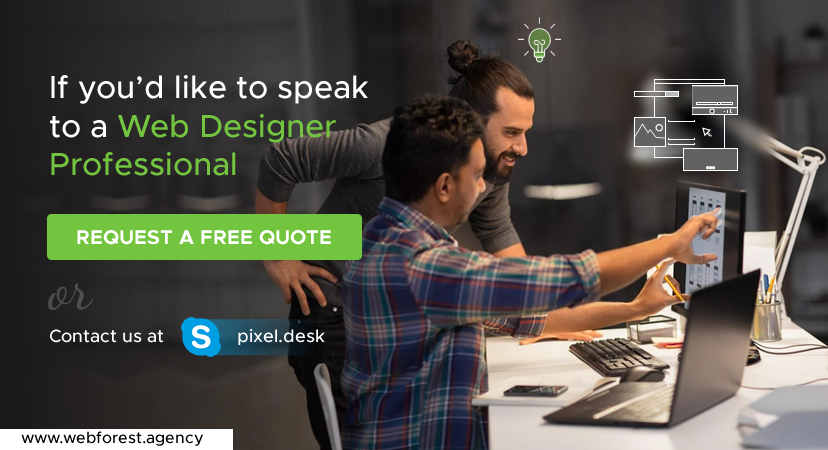Getting started on a new project can be daunting enough but having your Web designer misunderstand the feel and vibe of your project can be a major source of loss! To cut your losses short, follow the following tips for better communication between you and your Web designer.
Make them see the user POV of your target audience. Explain the end goal of your website Always Use References With different skill sets and learning backgrounds, miscommunication is bound to happen sooner or later!
Do not just write down a to-do list for Web designers, give references/examples to avoid any sort of miscommunication. Showing visual examples of designs is a great way to communicate your vision to your Web designer!
The Issue
When people experience miscommunication, they’re sometimes said to be not speaking the same language. This can happen anywhere from our daily interactions with the people around us to the way we communicate with coworkers and clients in the workplace.
With so many different skill sets and learning styles, breakdowns in communication are bound to happen especially between Web designers and non-designers. In this post, we’ll take a look at a few ways these common miscommunications can manifest and discover ways to resolve them.
Understand Differences in Note-taking
Say you’re in a kickoff or review meeting with your project team, including 1 or more Web designer. Project managers and content editors are diligently taking notes on tablets, computers, or by hand mostly in the form of written language, with maybe 1–2 sketches or diagrams.
But if you glance at a website designer page, you’re likely to see less text and more of what you think of as distracting doodles: sketches of the room or some of the ideas being tossed around during the meeting.
Text-based note-taking is usually seen as an acceptable part of listening, but visual note-taking might be dismissed as spacing out or not paying attention when in fact it’s a creative form of active listening.
In a 2009 study where participants listened to a telephone message of a list of names, half the participants were asked to shade in shapes (effectively, doodle) while listening. On a pop quiz later, the doodlers remembered 29% more information than the non-doodlers.
So don’t get livid if you see a Website designer or for that matter, anyone doodling. It’s now encouraged as a way to process and retain more information for Web designers and non-designers alike, and the images are often either directly related to the conversation or metaphorically linked, to serve as memory cues later on.
Use Visual Examples
Since website designer communicate primarily by visual means, it makes sense that they respond better to visual examples than verbal or written descriptions.
Showing examples and explaining specifically what you like about them (colors, fonts, illustration style, and layout) upfront and/or during the edits stage is extremely helpful.
It isn’t the same as being prescriptive (which is something that should be avoided, and will be covered in more detail in the next section) it’s giving inspiration and guidance to help the web designer decide what the best solutions are for the project.
Conversely, designer commonly show examples of their illustration styles and previous work that utilizes those styles, which can help clients more clearly understand how those styles might play out in their project.
Whenever possible, it’s best if the website designer and client can exchange this guidance directly. This is not at all to say your project shouldn’t have a project manager! Project managers are critical to success and should be involved in all communications to help facilitate and guide the project they may even be the ones providing visual examples for designer to approve and clients to react to.

It simply means that there are some steps in a project process where it doesn’t make sense to keep a wall between web designer and clients because this direct communication reduces the risk of sentiments being lost in translation. We’ve found that ideation and feedback are 2 of those stages.
For example, This text needs to pop a little more may sound helpful on the surface, but that can actually mean brighter colors to 1 person, increased font size to another, and a shadow effect to someone else.
I love the way the text pops in the header of this design” shows that direction implemented in a specific way so that neither the project manager nor the client has to figure out that it’s the layered gradients or the Knockout font that defines the “pop” for them.
If you’re a client looking to improve your communications with the web designer you hire, consider going back to the second tip in this post: using examples to convey the types of designs and treatments you like, instead of saying exactly what you want to see and how you want to see it.
If you’re a project manager, do your best to filter client feedback through a lens that inspires the website designer to generate solutions, rather than putting them into a box.
Remember that explaining why the information you receive is critical. So, not the client wants this section bigger but we’ve learned that this stat is the most important focal point for the client it’s the 1 point they want the viewer to walk away with at the end.
They suggested making it bigger, but anything you can add to make it clear that this stat is the most important takeaway for the viewer will really help with their goals.
Again, an exceptional website designer will be able to process feedback in any form it comes to them, but non-designer can definitely play a role by trying to see the project through a web designer eyes instead of approaching them the same way they would approach an analyst or marketer.
Why Hire The Webforest For Your Project
Webforest is a leading One-Stop Digital Agency for IT Services & Solutions. We Specialize in Web Design & Web Development, Mobile App Development, and Software Development. With over 8+ years of expertise in the IT industry, working along with over 30+ overseas Web and Marketing Agencies.
We tailor every project according to your needs with original ideas and the latest technology. From Websites to Software Applications, we can handle it all! We do not just work to satisfy our clients; we work to help them achieve their goals.
Our team has solid experience developing in Node, Angular, React, and React Native, Gatsby, and Rails frameworks as well as in JavaScript, Java, PHP, and Ruby programming languages.
Want to know more? Visit our website now: Webforest Agency
More Related Posts:
7 Reasons Why Your Business Needs To Have A Website
What is Website Responsive Design? And Why Do You Need It?
25+ Web Design and Development Terms Every Client Should Know


